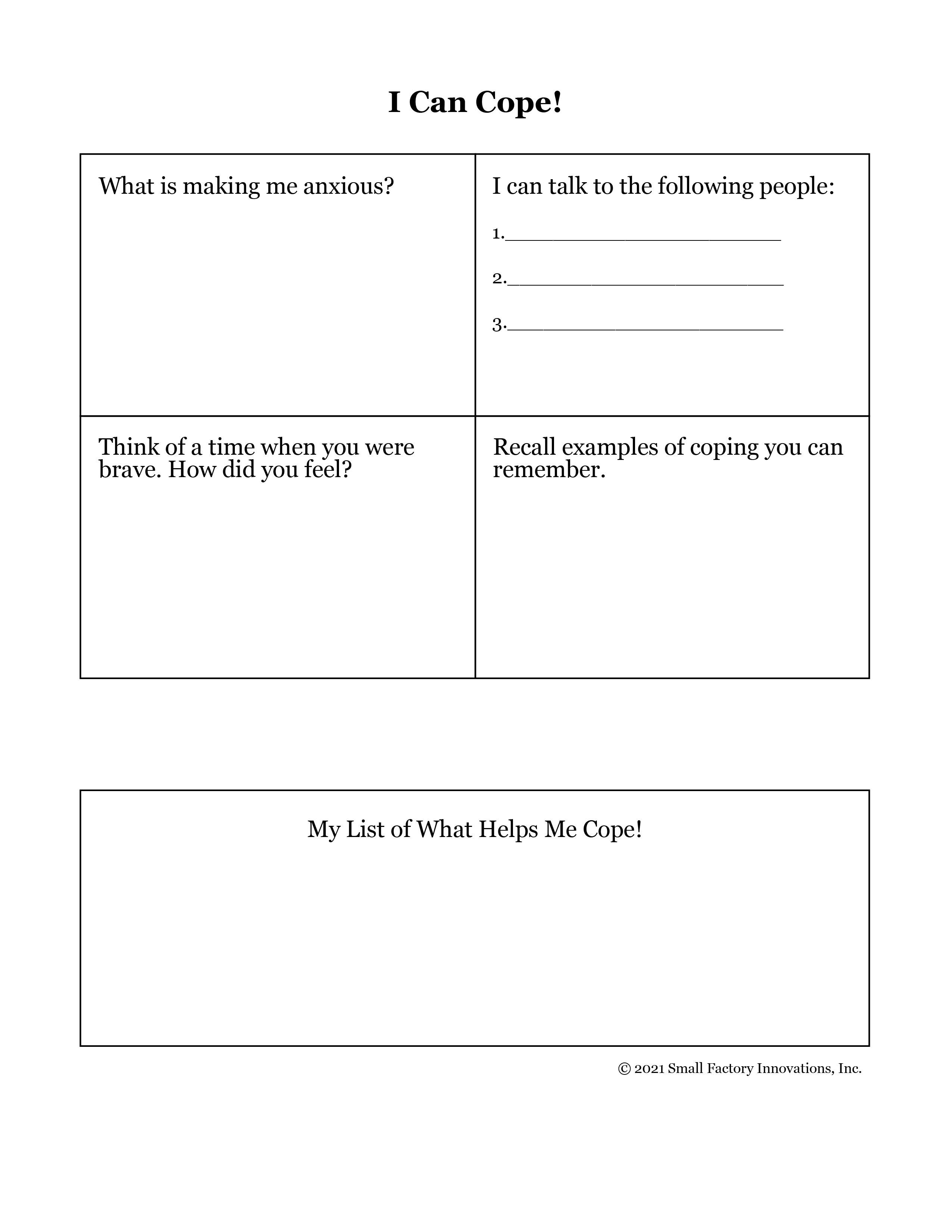
Improve life outcomes
Jumpstart: What Makes Me Anxious - Universal
Foundational
CASEL Competency Focus: Self-Awareness
Time: 20-30 minutes
Materials: Chart Paper/Board, Colored Pencils/Crayons/Markers, Body Outline (Handout Included), Example Coping Cards (Provided), I Can Cope (Handout Included)
Optional: Bulletin Board Paper/Butcher Paper, Old Magazines, Glue, Writing Utensils
Objectives:
1. Recognize the internal and external signs of anxiety in oneself.
2. Identify activities or situations that make oneself feel anxious.
3. Select coping skill(s) to address anxiety.
Definitions of Key Terms:
- Anxiety: Extreme constant fear about everyday situations.
- Anxious: Experience of being very worried/fearful of the outcome of a situation.
- Worry: Anxiety and unease about a situation or problem.
- Trigger: A thought or experience that causes someone to become anxious.
Lesson Procedures
Introduction: It is normal to feel anxious and worried from time to time. Some common situations that can induce anxiety include; starting or transfering to a new school, moving, doctor appointments, and speaking in front of others. Begin the conversation by asking students to share what anxiety means to them. Discuss responses. If there is any indication students are unfamiliar with the term “anxiety,” use the definitions above. With younger students you may want to introduce the concept of worrying. Share different situations when you experience anxiety or become anxious. Introduce the concept of a trigger. Sometimes a trigger can be a person, place, or action. For some an upcoming math test can trigger anxiety. Share that in this instance, test anxiety is common among both children and adults. Allow students to think about how they feel on the inside when they are anxious. How do they feel on the outside when they are anxious? Possible internal and external signs of anxiety can include; rapid heart beat, upset stomach or “butterflies” in their stomach, headache, shortness of breath, crying, sweating, shaking hands or legs, trouble concentrating, and feeling weak or tired.
Game Time: All The Feels
As we know and as discussed above, our bodies have an involuntary physical and emotional response to worry and anxiety. It is often difficult for us (children and adults alike) to “name” or “define” how we feel. This can increase the overwhelming feeling of anxiety. Providing students the opportunity to pause for a few moments and recall what happens both on the inside and outside of their bodies. Use the Body Outline handout below with students. Students should use crayons, colored pencils, or markers to illustrate through pictures, images or words what they feel like both inside and outside when they are anxious. If time allows, have students volunteer to share their body outline. You may also consider displaying these works of art around the classroom.
Application: I Can Cope!
Just as important as recognizing anxiety in ourselves is determining ways to manage our feelings. These are called coping skills. Coping skills are important and are integrated into a number of SiLAS lessons. Review example coping strategies with students using the SiLAS Coping Cards here. Encourage students to share ways they cope. Be sure to let students know not every coping skill works for every person. Coping strategies are personal and unique to who we are. Using the handout provided, explain that in this activity students will have the opportunity to walk through the process of handling anxiety.
Try it out!
As a class, create a “Calming Collage.” Use bulletin board or butcher paper to create a mural using magazine pictures, words and drawings that portray soothing and calming images. Think of a beach scene or other settings or items that help us relax and stay calm. Hang the collage in the room and continue to add items as they may naturally arise in class.

